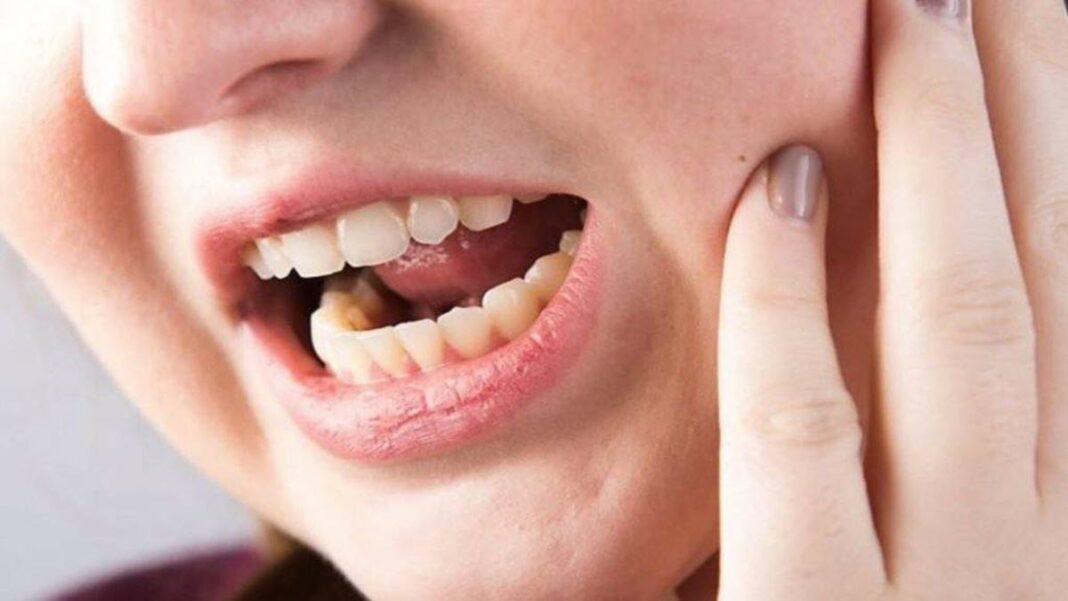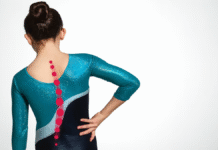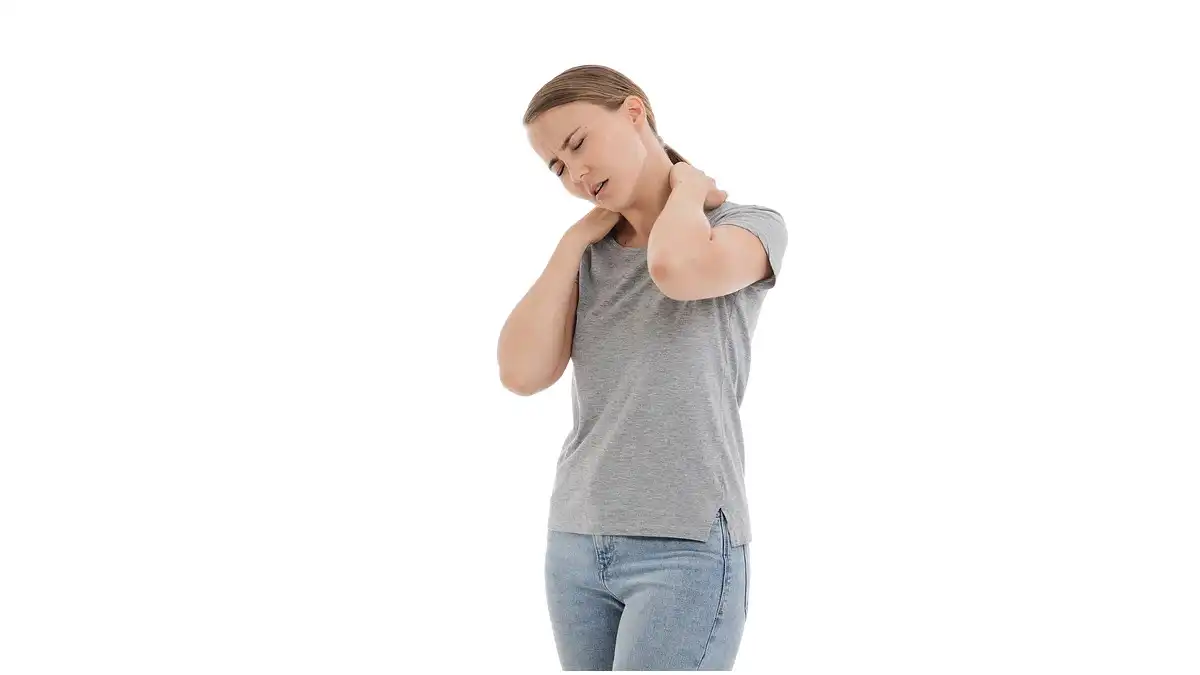Introduction
Trismus, or jaw locking, is a painful condition characterized by contraction of the jaw elevator muscles, particularly the medial pterygoid muscles and the masseter. These muscles play a crucial role in jaw movements, and when they contract excessively, they can interfere with the normal opening of the mouth, limiting its range of motion.
The standard measurement for normal mouth opening width is approximately 35 millimeters, equivalent to the width of three fingers for most individuals. When trismus occurs, this amplitude is reduced, causing significant discomfort. The causes of lockjaw are varied, ranging from infections and trauma to dental disorders, surgical procedures, or even underlying medical conditions.
One common cause of lockjaw is inflammation of the jaw muscles, usually due to infections, such as tooth abscess. When an infection spreads to surrounding soft tissues, it can cause an inflammatory response, causing muscles to contract and thus restricting the opening of the mouth. Likewise, trauma, such as a direct blow to the jaw, can cause inflammation and trigger lockjaw.
Surgical procedures on the jaw, such as wisdom teeth extraction, can also lead to lockjaw. Surrounding tissues may respond to surgery by contracting to protect the healing area, limiting jaw mobility. Dental disorders, such as malocclusion or temporomandibular joint (TMJ) problems, can contribute to the development of trismus.
Underlying medical conditions, such as quadriplegia, cerebral palsy, or other neurological conditions, may also be associated with trismus. Neurological disorders can influence the control of the jaw muscles, leading to involuntary contraction and limitation of mouth opening.
The symptoms of lockjaw go beyond just difficulty opening your mouth. Affected people may feel severe pain in the jaw area, which can make chewing and speaking difficult. Discomfort may also be experienced during dental work or medical examinations involving opening the mouth.
Treatment for lockjaw depends on the underlying cause. In the case of an infection, antibiotics may be prescribed to reduce inflammation. Physical therapies, such as gentle stretching of the jaw muscles, may be recommended to restore mobility. In some cases, muscle relaxants may be prescribed to loosen tight muscles.
In conclusion, trismus is a painful condition resulting from contraction of the jaw elevator muscles, limiting the amplitude of mouth opening. The causes can be varied, from infections and trauma to dental disorders and underlying medical conditions. Management of trismus requires a thorough evaluation to identify the specific cause, followed by a tailored treatment plan to relieve discomfort and restore normal jaw function.
Jaw Anatomy
To understand lockjaw, it is imperative to gain a thorough understanding of jaw anatomy. The jaw constitutes a sophisticated musculoskeletal complex, encompassing muscles, joints, and bony structures interacting in a coordinated manner to facilitate a diverse range of essential movements, such as chewing, speaking, and opening the mouth.
The jaw muscles play a fundamental role in its functions. The medial pterygoid muscles and the masseter, in particular, are crucial for jaw mobility. Their precise coordination allows the smooth opening and closing of the mouth, as well as the realization of complex movements during chewing. Any imbalance in this coordination can lead to dysfunctions, including lockjaw.
Joints play a key role in jaw mechanics. The temporomandibular joint (TMJ), connecting the lower jaw to the base of the skull, is particularly essential. This joint allows complex movements, including rotations and translations, necessary for various daily activities. TMJ dysfunction can contribute to trismus by disrupting normal jaw mobility.
Bony structures, including the mandible, maxilla, and other bones of the skull, provide the necessary structural framework for the muscles and joints of the jaw. Bone problems, such as structural abnormalities or fractures, can affect the normal mechanics of the jaw, potentially leading to lockjaw.
Lockjaw can result from a variety of causes, highlighting the importance of understanding the different anatomical aspects of the jaw. Infections, trauma, surgical procedures, and even underlying medical conditions can all contribute to this condition by affecting the muscles, joints, or bony structures of the jaw.
Infections, such as dental abscesses, can lead to inflammation of the jaw muscles, causing contraction and thus limiting the width of the mouth opening. Trauma, whether direct or related to surgical procedures, can disrupt the musculoskeletal balance of the jaw, leading to complications such as trismus.
A thorough understanding of jaw anatomy is therefore crucial to assessing and treating trismus effectively. Healthcare professionals, including dentists, maxillofacial surgeons and osteopaths, rely on this knowledge to identify the underlying cause of lockjaw and develop a suitable treatment plan, whether it is medical intervention, physical therapies or other approaches specific to the individual condition.
Causes of Trismus
The causes of trismus, a condition characterized by limitation of normal mouth opening, are varied and can result from several factors related to the muscles, joints or bony structures of the jaw. A thorough understanding of these causes is crucial to effectively diagnosing and treating lockjaw.
Infections are one of the common causes of lockjaw. Dental abscesses, for example, can lead to inflammation of the medial pterygoid and masseter muscles, causing painful muscle contraction and thus limiting the amplitude of mouth opening. Infections in the soft tissues of the jaw, such as those resulting from a wound or injury, can also contribute to the development of lockjaw.
Trauma, whether due to accidents, falls or surgical procedures, is another significant cause of lockjaw. A direct impact on the jaw, for example in a car accident, can cause damage to muscles, joints or bones, leading to a protective response in the form of muscle contraction, thereby limiting movement of the jaw. jaw. Surgical procedures, especially those involving the jaw or surrounding structures, can also lead to post-operative trismus.
Dental disorders, such as malocclusion or temporomandibular joint (TMJ) problems, can contribute to trismus. A poor bite or joint problems can disrupt the musculoskeletal balance of the jaw, leading to difficulty opening the mouth normally.
Certain underlying medical conditions may also be associated with lockjaw. Neurological disorders, such as quadriplegia or cerebral palsy, can influence the control of the jaw muscles, causing involuntary muscle contraction and limiting the range of jaw movement.
Psychological disorders, although less common, can also contribute to trismus. Bruxism, for example, which is the grinding of the teeth while sleeping, can cause excessive muscle tension, eventually leading to lockjaw.
Additionally, genetic factors may play a role in predisposition to trismus, although this is less common. Some individuals may have an increased susceptibility to jaw muscle or joint problems due to hereditary factors.
Accurately diagnosing the causes of lockjaw often requires a thorough evaluation by a healthcare professional, including a dentist, maxillofacial surgeon, or specialized physician. Clinical examinations, x-rays, and other medical imaging tests may be necessary to identify the specific underlying cause of trismus and guide the choice of appropriate treatment.
List of causes
- Dental Problems:
- Dental Decay: A deep cavity or dental infection can cause inflammation of the surrounding tissues, leading to limitation of mouth opening.
- Dental Extraction: Lockjaw can occur after tooth extraction, due to the natural inflammation that accompanies the healing process.
- Temporomandibular Joint Disorders (TMJ):
- Temporomandibular Arthritis: Inflammation of the temporomandibular joint can cause pain and stiffness, limiting jaw movement.
- TMJ dislocation: A dislocation of the joint can cause temporary trismus.
- Trauma:
- Facial Injuries: Injuries to the jaw or surrounding muscles can lead to an inflammatory reaction and lockjaw.
- Maxillofacial Surgery: Surgical procedures in the maxillofacial region can cause post-operative trismus.
- Infections:
- Cellulitis: An infection in the soft tissues of the mouth can cause swelling and stiffness, leading to lockjaw.
- Tetanus: A bacterial disease, such as tetanus, can cause severe lockjaw by affecting the jaw muscles.
- Tumors and Masses:
- Oral Tumors: Tumors in the oral area can compress surrounding muscles and structures, leading to lockjaw.
- Cysts: Some cysts can disrupt normal jaw function and cause limitation of movement.
- Neurological Conditions:
- Tetany: An imbalance of electrolytes, particularly calcium, can cause muscle tetany, including in the jaw muscles.
- Neurological Diseases: Certain neurological conditions, such as multiple sclerosis, can affect the nerves that control the jaw muscles.
- Drug Reaction:
- Side Effects of Medications: Some medications, such as neuroleptics or antipsychotics, can cause lockjaw as a side effect.
- Systemic Diseases:
- Tetanus: This bacterial disease can cause severe lockjaw by affecting the muscles.
- Amyotrophic Lateral Sclerosis (ALS): A neurodegenerative disease that can affect the jaw muscles.
Symptoms of Trismus
The symptoms of trismus, characterized by a painful limitation of the normal amplitude of opening of the mouth, are often identifiable thanks to specific manifestations. These symptoms, both physical and functional, can vary in intensity depending on the underlying cause of the trismus.
One of the most obvious signs of trismus is difficulty opening your mouth normally. Affected individuals feel muscular resistance when attempting to extend their jaw beyond a certain limit. This limitation can be measured in millimeters, and for most people the normal mouth opening range is around 35 millimeters. However, in the presence of trismus, this measurement can be significantly reduced.
Pain is a common symptom of trismus. The excessive muscle contraction associated with this condition can lead to a feeling of discomfort or pain, usually felt in the jaw area. The pain may be exacerbated when attempting to open the mouth, chew, or even speak, and may vary in intensity depending on the underlying cause.
Functional difficulties with chewing and speaking are also common symptoms of trismus. Restricted jaw movement can make chewing food more difficult, potentially leading to loss of appetite. Likewise, limiting mouth opening can impair pronunciation and clarity of speech.
When lockjaw is caused by an infection, symptoms such as fever, redness, or swelling of the affected area may also be present. These signs often indicate an inflammatory response to the infection, contributing to the muscle contraction characteristic of trismus.
In some cases, trismus can be accompanied by bruxism, which is the grinding of the teeth. Bruxism can exacerbate muscle tension already present, increasing pain and difficulty opening your mouth.
It is crucial to note that the severity of symptoms can vary depending on the specific cause of lockjaw. A thorough evaluation by a healthcare professional, such as a dentist, maxillofacial surgeon, or physician, is essential to identify the underlying cause and develop a suitable treatment plan.
Treatment for trismus will depend on the cause identified. In the case of an infection, antibiotics may be prescribed to resolve the inflammation. Physical therapies, such as gentle stretching of the jaw muscles, may be recommended to restore mobility. In some cases, painkillers or muscle relaxants may be given to relieve pain and relax tight muscles.
- Difficulty opening the mouth: The main characteristic of trismus is difficulty opening the mouth normally. This can range from mild discomfort to a complete inability to open your mouth.
- Pain: People with lockjaw may feel pain in the jaw area when they try to open their mouth. The pain can be mild to severe.
- Muscle Stiffness: The jaw muscles can become stiff due to constant muscle contraction. This contributes to the limitation of the range of motion of the jaw.
- Discomfort or pain when chewing: Due to difficulty opening the mouth, chewing food can become uncomfortable or even painful.
- Speech problems: Contraction of the jaw muscles can affect the ability to speak normally, sometimes leading to speech problems.
- Muscle fatigue: The jaw muscles may fatigue more quickly due to prolonged contraction, which can worsen difficulty opening your mouth.
- Feeling of pressure or tension: Some people may feel a feeling of pressure or tension in the jaw area.
Restricted jaw movement, trismus and how to calculate vertical dimension
Diagnosis of Trismus
Diagnosing trismus involves a systematic evaluation to identify the underlying cause of restricted jaw movement and to assess the severity of the condition. Trismus can result from a variety of etiologies, including traumatic injuries, infections, inflammatory conditions, neoplastic processes, or radiation therapy to the head and neck region. Understanding the patient’s medical history, performing a comprehensive physical examination, and utilizing diagnostic imaging studies are essential steps in making an accurate diagnosis and guiding appropriate management strategies.
The diagnostic evaluation of trismus begins with a thorough medical history, focusing on potential predisposing factors, recent trauma or dental procedures, history of infections or inflammatory conditions, and any history of radiation therapy to the head and neck region. Patients may report symptoms such as difficulty chewing, swallowing, or speaking, as well as pain or discomfort with jaw movement. Inquiring about the onset, duration, and progression of symptoms can provide valuable clues to the underlying cause of trismus.
Physical examination of the temporomandibular joint (TMJ) and surrounding structures is essential for assessing the extent and nature of jaw limitation. Measurement of maximal incisal opening (MIO), which is the maximum distance between the upper and lower incisors when the mouth is fully opened, provides an objective assessment of jaw mobility. Normal MIO ranges from 35 to 50 millimeters in adults, although individual variation exists. Measurement of MIO helps quantify the degree of trismus and monitor changes in jaw mobility over time. In addition to MIO, assessment of lateral and protrusive jaw movements can also provide valuable information about the functional status of the TMJ and surrounding muscles.
Diagnostic imaging studies such as panoramic radiography, computed tomography (CT), or magnetic resonance imaging (MRI) may be indicated to evaluate the underlying structures of the TMJ and surrounding tissues. Radiographic findings such as joint effusion, osteoarthritic changes, condylar fractures, or space-occupying lesions can help identify specific causes of trismus and guide further management. CT or MRI may be particularly useful for evaluating soft tissue abnormalities, such as muscle spasm, inflammation, or neoplastic processes.
Laboratory investigations such as complete blood count (CBC), erythrocyte sedimentation rate (ESR), C-reactive protein (CRP), and serological tests for infectious diseases may be warranted to assess for systemic conditions or underlying infections contributing to trismus. In cases of suspected inflammatory conditions such as temporomandibular joint disorder (TMD), referral to a specialist such as a maxillofacial surgeon or rheumatologist may be necessary for further evaluation and management.
The calculation of vertical dimension in dentistry refers to the measurement of the distance between the occlusal surfaces of the maxillary and mandibular teeth when the jaws are in centric relation, or the most retruded position of the mandible. Vertical dimension is an important consideration in prosthodontic treatment planning, as changes in vertical dimension can affect occlusal stability, esthetics, and function. Several methods can be used to calculate vertical dimension, depending on the patient’s dentition, occlusal relationship, and treatment goals.
One common method for calculating vertical dimension involves measuring the resting vertical dimension, or the distance between the maxillary and mandibular arches when the patient is in a relaxed, unstrained position. This measurement is typically taken using a dental caliper or ruler, with the patient’s teeth in maximum intercuspation and the lips lightly closed. Resting vertical dimension provides a baseline reference for determining changes in vertical dimension during prosthodontic treatment.
Another method for calculating vertical dimension involves using phonetics or speech to establish the correct vertical dimension for prosthetic restorations. The patient is instructed to pronounce specific sounds or words while the clinician observes the position of the mandible and monitors for signs of phonetic collapse, or loss of vertical dimension. Adjustments can be made to the occlusal surfaces of the prosthetic restorations to optimize phonetic function and maintain appropriate vertical dimension.
Management of Trismus
Management of trismus, a condition characterized by a painful limitation of the normal range of mouth opening, relies on an integrated approach aimed at treating the underlying cause while relieving associated symptoms. This management often involves close collaboration between different healthcare professionals to develop a personalized treatment plan.
The first step in managing lockjaw is to identify the specific cause of the condition. A thorough evaluation, usually performed by a dentist, maxillofacial surgeon, or specialized physician, helps determine whether lockjaw is caused by infection, trauma, dental disorders, underlying medical conditions, or other factors. .
Once the cause is identified, treatment can be directed toward its resolution. In the case of an infection, antibiotics may be prescribed to clear the infection and reduce inflammation. In case of dental problems, interventions such as occlusion readjustment or treatment of temporomandibular joint (TMJ) problems may be considered.
Along with treating the underlying cause, managing lockjaw often involves measures to relieve the symptoms. Pain relievers may be prescribed to ease the pain associated with excessive muscle contraction. Muscle relaxants may also be given to relax the jaw muscles, making it easier to open the mouth.
Physical therapies play a crucial role in the management of lockjaw. Gentle jaw muscle stretching exercises, under the supervision of a healthcare professional, can help restore mobility and prevent the formation of scarring or muscle adhesions that cause limitation of movement.
At the same time, stress management techniques may be recommended, especially if trismus is aggravated by psychological factors such as bruxism. Relaxation methods, meditation or even consultations with mental health professionals can help reduce muscle tension associated with psychological factors.
In some cases, specific devices may be used to treat lockjaw. Occlusal plates, for example, may be prescribed to reduce bruxism and relieve muscle tension. Progressive mouth opening devices can also be used under medical supervision to help gradually extend the jaw’s range of motion.
Managing lockjaw often requires a multidisciplinary approach, involving dentists, surgeons, osteopaths and other healthcare professionals. Regular monitoring is essential to evaluate the effectiveness of the treatment and adjust the management plan according to the evolution of the condition.
Management list
- Clinical Evaluation: A thorough evaluation by a healthcare professional, such as a dentist, doctor, or rehabilitation specialist, is essential to determine the cause of lockjaw. A complete medical history and physical examinations will be performed.
- Treating the underlying cause: Identifying and treating the underlying cause of trismus is crucial. This may involve treating infections, managing inflammation, muscle rehabilitation, or other specific interventions depending on the diagnosis.
- Osteopathy: Exercises aimed at stretching and strengthening the masticatory muscles may be recommended. These exercises can help improve jaw mobility.
- Drug therapy: Medications such as muscle relaxants, anti-inflammatories or analgesics may be prescribed to relieve pain and relax muscles.
- Oral orthotics: In some cases, the use of oral orthotics, such as discharge plates or mandibular extension devices, may be recommended to help maintain or improve the amplitude of the mouth opening.
- Surgery: In cases of structural causes or serious complications, surgery may be considered. This may include releasing tight muscles or other situation-specific procedures.
- Pain Management: Proper pain management is an important aspect of treatment. Pain-relieving medications may be prescribed to relieve the discomfort associated with lockjaw.
- Follow-up and re-evaluation: Regular follow-up with the healthcare professional is necessary to assess progress, adjust the treatment plan if necessary and provide ongoing support to the patient.
Lockjaw prevention and home care
Lockjaw prevention and home care play a crucial role in improving jaw mobility and relieving symptoms in patients affected by this condition. Home care involves a proactive approach, often guided by medical professionals, to maintaining jaw health and preventing the recurrence of lockjaw.
Specific exercises aimed at stretching and strengthening the jaw muscles are essential for improving mobility. Mouth opening exercises, under the supervision of a healthcare professional, can help gradually extend the range of motion. These exercises should be performed regularly, respecting individual limits, to avoid excessive tension.
Applying heat or cold may be beneficial in relieving pain associated with trismus. Hot compresses can help relax tight muscles, while cold compresses can reduce inflammation. It is crucial to follow the recommendations of a healthcare professional to determine the best modality to use in each case.
The use of progressive mouth opening devices at home may be considered, under the supervision of a healthcare professional. These devices are designed to help gradually extend the jaw’s range of motion, thereby promoting recovery. It is essential to follow the specific instructions and not force the movements to avoid worsening the condition.
Special attention to diet and nutrition is necessary for people suffering from lockjaw. Soft, easy-to-chew foods can help minimize pressure on the jaw, making eating easier. Avoiding foods that are difficult to chew and eating smaller pieces can help prevent muscle fatigue and pain.
Stress management plays a significant role in preventing trismus, especially when associated with psychological factors such as bruxism. Relaxation techniques, meditation, and other stress management methods can help reduce muscle tension, helping to prevent the development of lockjaw.
It is important that patients carefully follow the recommendations and advice of their healthcare professionals when implementing home care and exercises. Regular communication with the medical team allows the care plan to be adjusted according to the evolution of the condition. Additionally, patients should report any persistent discomfort or new symptoms for appropriate evaluation.
References
- Dhanrajani PJ, Jonaidel O. Trismus: aetiology, differential diagnosis and treatment. Dent Update. 2002 Mar;29(2):88-92, 94. [ PubMed ]2.
- Tveterås K, Kristensen S. The aetiology and pathogenesis of trismus. Clin Otolaryngol Allied Sci. 1986 Oct;11(5):383-7. [ PubMed ]3.
- Garnett MJ, Nohl FS, Barclay SC. Management of patients with reduced oral aperture and mandibular hypomobility (trismus) and implications for operative dentistry. Br Dent J. 2008 Feb 09;204(3):125-31. [ PubMed ]4.
- Ogle OE, Mahjoubi G. Local anesthesia: agents, techniques, and complications. Dent Clin North Am. 2012 Jan;56(1):133-48, ix. [ PubMed ]5.
- Osunde OD, Adebola RA, Omeje UK. Management of inflammatory complications in third molar surgery: a review of the literature. Afr Health Sci. 2011 Sep;11(3):530-7. [ PMC free article ] [ PubMed ]6.
- Bouloux GF, Steed MB, Perciaccante VJ. Complications of third molar surgery. Oral Maxillofac Surg Clin North Am. 2007 Feb;19(1):117-28, vii. [ PubMed ]7.
- List T, Jensen RH. Temporomandibular disorders: Old ideas and new concepts. Cephalalgia. 2017 Jun;37(7):692-704. [ PubMed ]8.
- Beddis HP, Davies SJ, Budenberg A, Horner K, Pemberton MN. Temporomandibular disorders, trismus and malignancy: development of a checklist to improve patient safety. Br Dent J. 2014 Oct;217(7):351-355. [ PubMed ]9.
- Ryan P, McMahon G. Severe dental infections in the emergency department. Eur J Emerg Med. 2012 Aug;19(4):208-13. [ PubMed ]10.
- Honda K, Natsumi Y, Sakurai K, Ishikura R, Urade M. Mucinous adenocarcinoma of the temporal region initially diagnosed as temporomandibular disorders: a case report. J Oral Pathol Med. 2006 Oct;35(9):582-5. [ PubMed ]11.
- Kamstra JI, van Leeuwen M, Roodenburg JL, Dijkstra PU. Exercise therapy for trismus secondary to head and neck cancer: A systematic review. Head neck. 2017 Jan;39(1):160-169. [ PubMed ]12.
- Dijkstra PU, Huisman PM, Roodenburg JL. Criteria for trismus in head and neck oncology. Int J Oral Maxillofac Surg. 2006 Apr;35(4):337-42. [ PubMed ]13.
- Pauli N, Fagerberg-Mohlin B, Andréll P, Finizia C. Exercise intervention for the treatment of trismus in head and neck cancer. Acta Oncol. 2014 Apr;53(4):502-9. [ PubMed ]14.
- Goldstein M, Maxymiw WG, Cummings BJ, Wood RE. The effects of antitumor irradiation on mandibular opening and mobility: a prospective study of 58 patients. Oral Surg Oral Med Oral Pathol Oral Radiol Endod. 1999 Sep;88(3):365-73. [ PubMed ]15.
- Fischer DJ, Epstein JB. Management of patients who have undergone head and neck cancer therapy. Dent Clin North Am. 2008 Jan;52(1):39-60, viii. [ PubMed ]16.
- Shires PM, Chow G. Trismus in the pediatric population. Dev Med Child Neurol. 2015 Apr;57(4):339-43. [ PubMed ]17.
- Loh SY, Mcleod RWJ, Elhassan HA. Trismus following different treatment modalities for head and neck cancer: a systematic review of subjective measures. Eur Arch Otorhinolaryngol. 2017 Jul;274(7):2695-2707. [ PMC free article ] [ PubMed ]18.
- Marien M. Trismus: causes, differential diagnosis, and treatment. Gen Dent. 1997 Jul-Aug;45(4):350-5. [ PubMed ]19.
- Lund TW, Cohen JI. Trismus appliances and indications for use. Quintessence Int. 1993 Apr;24(4):275-9. [ PubMed ]20.
- Dijkstra PU, Kalk WW, Roodenburg JL. Trismus in head and neck oncology: a systematic review. Oral Oncol. 2004 Oct;40(9):879-89. [ PubMed ]21.
- Wranicz P, Herlofson BB, Evensen JF, Kongsgaard UE. Prevention and treatment of trismus in head and neck cancer: A case report and a systematic review of the literature. Scand J Pain. 2010 Apr 01;1(2):84-88. [ PubMed ]

















